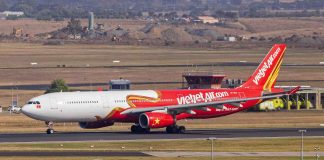The United States and China signalled a pause in their two-year trade confrontation after President Donald Trump and President Xi Jinping met for the first time since 2019, agreeing in principle to ease tariffs, maintain flows of rare earths and resume Chinese purchases of American soybeans.
The talks took place in Busan, South Korea, against the backdrop of Mr Trump’s declaration that the US would restart nuclear weapons testing after a 33-year halt.
Speaking to reporters aboard Air Force One following a meeting of about one hour and forty minutes, Mr Trump described the talks as “amazing” and said “a lot of decisions” had been taken, framing the outcome as a de-escalation intended to stabilise markets and supply chains. No joint communiqué was issued. US and Chinese officials characterised the understandings as time-limited and subject to follow-up by negotiating teams.
Tariff easing linked to fentanyl controls
Mr Trump said the United States would roll back a portion of tariffs imposed earlier this year, tying the move to Chinese action against precursor chemicals used to manufacture fentanyl. He indicated the average tariff burden on Chinese imports would decline from roughly 57% to 47%, a level closer to other trading partners though still historically high. Beijing, for its part, signalled willingness to intensify enforcement on synthetic-opioid precursors.
Rare earths: one-year reprieve
The most immediate supply-chain impact concerns rare earth elements critical to magnets and advanced manufacturing. According to Mr Trump and US trade officials, China agreed to a one-year arrangement under which planned new export restrictions will be suspended, with scope for renewal. The understanding is intended to avert shortages flagged by industry after China’s October move to widen controls. Clarifications on the status of pre-existing controls are to be handled at technical level in the coming days.
Soybean purchases resume
On agricultural trade, China’s state-owned Cofco has bought three cargoes of US soybeans — the first purchases from this year’s American harvest — in what market sources described as a signal ahead of the leaders’ meeting. The resumption follows a sharp fall in US shipments to China through most of 2025, as Beijing sourced more heavily from Brazil. Further buying programmes are expected to be contingent on the tariff and currency environment.
Nuclear testing announcement frames talks
Hours before landing in Busan, Mr Trump posted on social media that he had ordered an immediate resumption of US nuclear weapons testing, citing recent Russian activities and China’s arsenal expansion. The statement, which would end a moratorium dating to 1992 if executed, drew criticism from non-proliferation advocates and added strategic tension to the bilateral encounter. The White House offered no details on test modalities or timelines; implementation would require site and regulatory decisions.
Semiconductors and export controls
Trade discussions also touched on access to US semiconductors. Mr Trump indicated that talks would not cover Nvidia’s newest “Blackwell”-class AI chips, though commercial engagement on other products could proceed subject to existing licensing requirements. Any modification of US export controls would face scrutiny in Washington, where senior lawmakers have urged caution on advanced AI hardware sales to China.
No agreement on core strategic disputes
Neither side reported progress on underlying strategic issues, including military risk-reduction or cyber security. The Busan outcome is best read as an armistice: tariff pressure will be partially eased; rare earths will continue to flow under a defined window; and agricultural purchases will restart. The durability of the truce will depend on enforcement of fentanyl-related measures, clarity on the scope of any rare-earth waivers, and the trajectory of US export controls on advanced technologies.
Trump–Xi talks in South Korea narrow to tariffs, rare earths and TikTok



